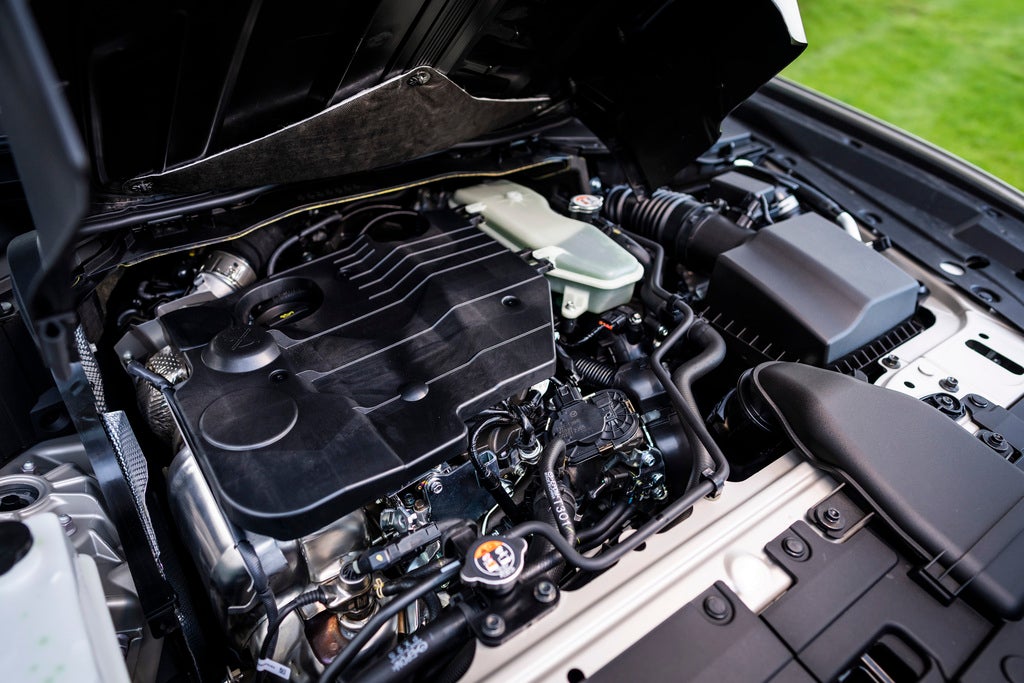General Motors today confirmed one of the industry’s worst-kept secrets by announcing that the Pontiac GTO – this time built by Australian subsidiary Holden – will return to US showrooms late in 2003, writes just-auto deputy editor Graeme Roberts.
Beginning in time for the 2004 model year, up to 18,000 GTOs will be produced each year at Holden’s Elizabeth, South Australia plant for sale in the United States. Industry observers suggest the retail price will be $US30-35,000.
The new car is a variant of the Holden Commodore-based Monaro Coupe, launched late last year to rave reviews from admittedly parochial Australian motoring media.
It will be mildly restyled for production as a left-hand drive Pontiac, rather than a right-hand drive Holden, and a sketch GM released shows a traditional Pontiac twin-nostril nose grafted on to the Monaro’s well-proportioned, curvy body.
Holden is no stranger to left-hand drive production, or the US market, having produced sedans for Hawaii in the mid-1960s. More recently it adapted its current Commodore sedan and long wheelbase derivatives for sale as Chevrolets in the Middle East (replacing the US Lumina) and South America. The Monaro Coupe is also destined for the Middle East in LHD form, badged as the Lumina S and SS.
The Monaro becomes the first Holden to be sold in the US for over 30 years though there have been proposals to ship large sedan and station wagon kits up for assembly as Buicks in the 1970s and a 1990s idea to replace the Impala police cruiser with a Commodore derivative. Neither project proceeded.
How well do you really know your competitors?
Access the most comprehensive Company Profiles on the market, powered by GlobalData. Save hours of research. Gain competitive edge.

Thank you!
Your download email will arrive shortly
Not ready to buy yet? Download a free sample
We are confident about the unique quality of our Company Profiles. However, we want you to make the most beneficial decision for your business, so we offer a free sample that you can download by submitting the below form
By GlobalDataRecent Australian exports include the early 1990s, Mazda 323-based Mercury Capri convertible from Ford’s Melbourne plant and the current Mitsubishi Diamante, shipped from Adelaide.
GM’s new ‘car guy’ Bob Lutz, chairman of North American operations, was a key player in bringing back the GTO after sampling the Monaro while visiting Holden.
“I love driving this car,” Lutz said, praising the Monaro’s 5.7-litre V8 and six-speed manual transmission.
“It shares that V8 heritage and a brawny, muscular stance with the classic GTO and it will make a fine flagship for Pontiac,” he added.
Executives at GM’s Detroit headquarters reportedly pulled rank for commuter and weekend drives in Monaros imported from Australia for evaluation and the model’s eventual US debut has been seen as a given – especially by Australian industry pundits – ever since Lutz visited the ‘Lucky Country’.
Though volumes are relatively small, the GTO deal represents useful additional volume for Holden’s Elizabeth, South Australia plant, currently assembling about 180,000 cars a year, and will require the recruitment of an additional shift.
It will also mean useful extra volume for Australian component makers who recently faced the prospect of Mitsubishi withdrawing from Down Under car manufacture.
However, the announcement of the Pontiac export deal, a huge pride booster for GM’s Holden outpost, which designs and builds its unique, top-selling Commodore models on a relatively shoestring budget, could soon turn sour if industrial unrest that has recently halted car and component output flares up again.
GM said the new GTO would share much of the styling of the current 2002 Holden Monaro CV8 coupe (a 3.8-litre CV6 version is also made) but would have a unique Pontiac dual-port grille and specially tuned 5.7-litre LS1 V8 (shared with some models of the Chevrolet Corvette) mated to a choice of either a six-speed manual or four-speed automatic transmission.
The rear-wheel drive coupe will also feature 17-inch alloy wheels, 2+2 bucket seating and a premium sound system with integrated six-disc CD changer.
Other details will not be available – officially – until the GTO’s public debut at the Los Angeles and Detroit motor shows next January.
The original Pontiac GTO was launched in 1963 as a 1964 model and became one of the best known ‘muscle cars’ in US car history. It was also sometimes known as ‘The Legend’ and ‘The Great One’.
Prior to 1964, performance cars were full-size hardtops and sedans with the largest displacement engines available. But hot rodders had known for years that they could go faster if they put big engines in smaller, lighter cars. Engine swaps were standard procedure for such car enthusiasts but that was backyard tinkering, not corporate engineering.
Enthusiasts’ dreams were answered in October 1963 when the $US295.90 GTO option, RPO W62, was slipped on to the 1964 Pontiac Tempest/LeMans option list.
The heart of the original GTO option package was a 325-horsepower 389-cubic-inch V8, Carter AFB four-barrel carburettor, rear-wheel drive, hydraulic camshaft and impressive torque.
Other standard features included a manual three-speed transmission with a Hurst shifter, a heavy-duty clutch, heavy-duty suspension, dual exhaust, US Royal red-line tires, a 3.23:1 rear axle ratio, twin hood scoops, and an assortment of GTO emblems.
Nearly 700,000 GTOs were sold by the time Pontiac ceased production after the 1974 model year.







